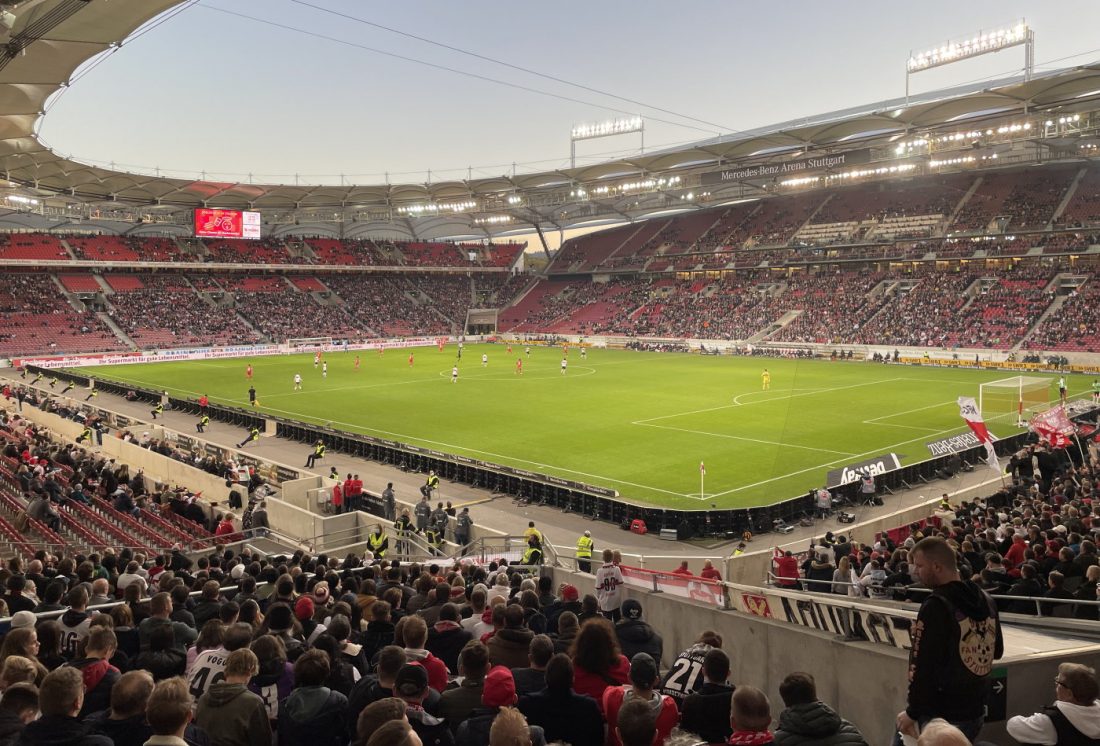
Key facts
Club: VfB Stuttgart | Opening: 1933 | Capacity: 60,441 (11,121 standing)
History and description
The Mercedes-Benz Arena got built between 1929 and 1933, and opened on 26 July 1933 with the German Gymnastics Championships. The stadium was initially called Adolf-Hitler-Kampfbahn, and could hold about 35,000 spectators.
Just two years later, the stadium was further expanded with wooden stands to a capacity of over 70,000 places, though these stands had to get closed in 1938 due to safety regulations.
After the Second World War, the name of the stadium was first changed to Century Stadium, and later in 1949 to Neckarstadion.
Right after, Neckarstadion was properly expanded and reached a capacity of almost 100,000 places.
In 1959 the stadium hosted the European Cup final between Real Madrid and Stade de Reims (2-0). A few years later, in 1962, Atlético Madrid beat Fiorentina 3-0 in the replay of that year’s Cup Winner’s Cup final.
In the early 1970s Neckarstadion got extensively renovated to prepare it for the 1974 World Cup. Works included the reconstruction of the main stand and cover for the opposite side. Capacity was reduced to 70,500 places.
During the 1974 World Cup, the stadium hosted three matches in the first group stage, and the match between Poland and Sweden (1-0) in the second group phase.
In 1988 Neckarstadion hosted its second European Cup final. The match between PSV Eindhoven and Benfica was won by the Dutch on penalties after having drawn 0-0 in regular time.
One month later, the stadium was one of the playing venues of the 1988 European Championships, hosting one first round group match and the semi-final between the Soviet Union and Italy (2-0).
Further redevelopments in 1993 saw the majority of the terraces converted into seats and a roof constructed that covered the complete stadium.
At the same time, the stadium changed name to Gottlieb-Daimler-Stadion, prompted by the financing of the works by car manufacturer Daimler-Benz.
Gottlieb-Daimler-Stadium underwent a next renovation in preparation for the 2006 World Cup, which included the reconstruction of the upper tiers.
During the World Cup, the stadium hosted 6 matches, including four first round group matches, the round of 16 match between England and Ecuador (1-0), and the match for third place between Germany and Portugal (3-1).
At that time, the stadium still had an athletics track, but in 2008 the city of Stuttgart decided to convert the stadium into a proper football stadium. The pitch was lowered, two new stands were built at the short ends, and the other stands extended closer to the pitch.
Capacity increased to its current total, and at the same time the name of the stadium changed to Mercedes-Benz Arena. Works were completed in the middle of 2011.
(photos of the present Mercedes-Benz Arena below)
How to get to the Mercedes-Benz Arena
The Mercedes-Benz Arena is located in the north-east of Stuttgart on the east bank of the river Neckar, about 4.5 kilometres from Stuttgart’s city centre and main rail station.
If arriving by car from the motorways around Stuttgart, signs with a stadium symbol will guide you, via the B10 and B14, to the stadium.
If using public transport, take overground metro (S-Bahn) line S1 from the main rail station (Hbf). Take the train in the direction of Kirchheim and get off at stop Neckarpark. From there it is a 5-minute walk to the stadium.
On matchdays, Stadtbahn line U11 can also bring you from the main rail station to the stadium (NeckarPark).
It is furthermore a doable 30-minute walk to the stadium from Bad Cannstatt station, which is served by several S-Bahn and other train lines.
Address: Mercedesstraße 87, 70372 Stuttgart (Bad Cannstatt)
Eat, drink, and sleep near the Mercedes-Benz Arena
The Mercedes-Benz Arena is squeezed in between the river Neckar and some railroad tracks, and is surrounded by other sports and event facilities, some light industry, and a few warehouses.
There are a few places to eat and drink in the building adjacent to the stadium that also houses the Hilton Hotel, but otherwise there is not much directly around in terms of entertainment. There are plenty of places to eat or drink in nearby Bad Cannstatt though.
If you wish to stay as close to the arena as possible, the Hilton Garden Inn NeckarPark will likely have your preference. It it is located right across the stadium, but does come in the higher price ranges. Hotel Discovery is a cheaper alternative located right on the other side of the Neckar.
Attimo Hotel Stuttgart, Motel One, and Hotel Geissler are also still at walking distance located near Bad Cannstatt rail station with the added benefit of having more eating and drinking options around.
Click here for all hotels near the Mercedes-Benz Arena, and here to explore the options in Stuttgart’s city centre.
VfB Stuttgart Tickets
Tickets for VFB Stuttgart games can be bought online, or in person at the Fan-Center at the Mercedes-Benz Arena.
Stuttgart’s attendances are amongst the highest in the Bundesliga, but the club only sell out about a third of their home matches and tickets are generally easily available if bought in advance.
Tickets range in price from €25.00 for a seat at one of the curves to €55.00 for a central seat at the main stand. Standing costs €14.50. Prices are increased for high-profile matches.
You can find a seating plan here.
Mercedes-Benz Arena stadium tours
Stuttgart offer a range of guided stadium tours, of which the Fan-Tour is most common. This tour lasts 90 minutes and includes the dressing room, players tunnel, dugouts, VIP facilities, and press areas.
Tours run multiple times per day. Check the VfB Stuttgart official website for the current schedule and bookings, which are required.
The tour costs €11.00. Email arenatour@vfb-stuttgart.de for more information.
Photos of the Mercedes-Benz-Arena
Useful websites
VFB.de – Official website of VFB Stuttgart.
Stuttgart-tourist.de – Official tourist website for the Stuttgart region
VVS.de – Stuttgart public transport information.





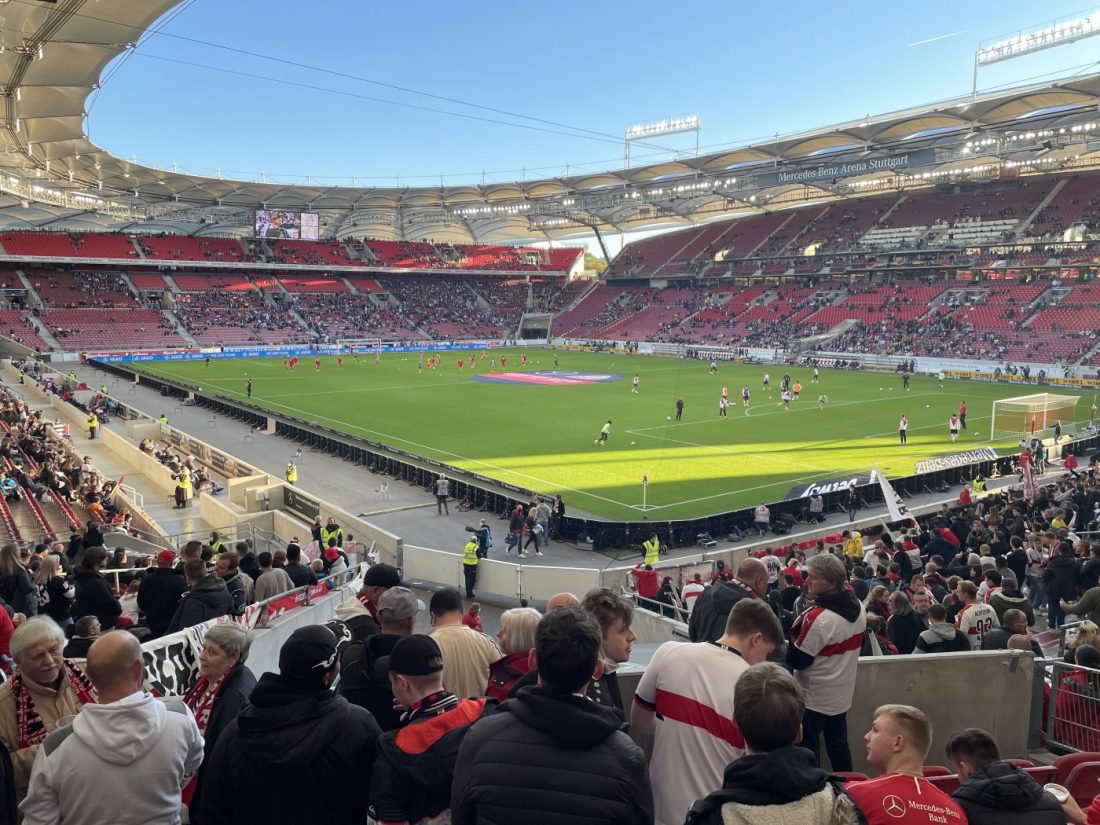
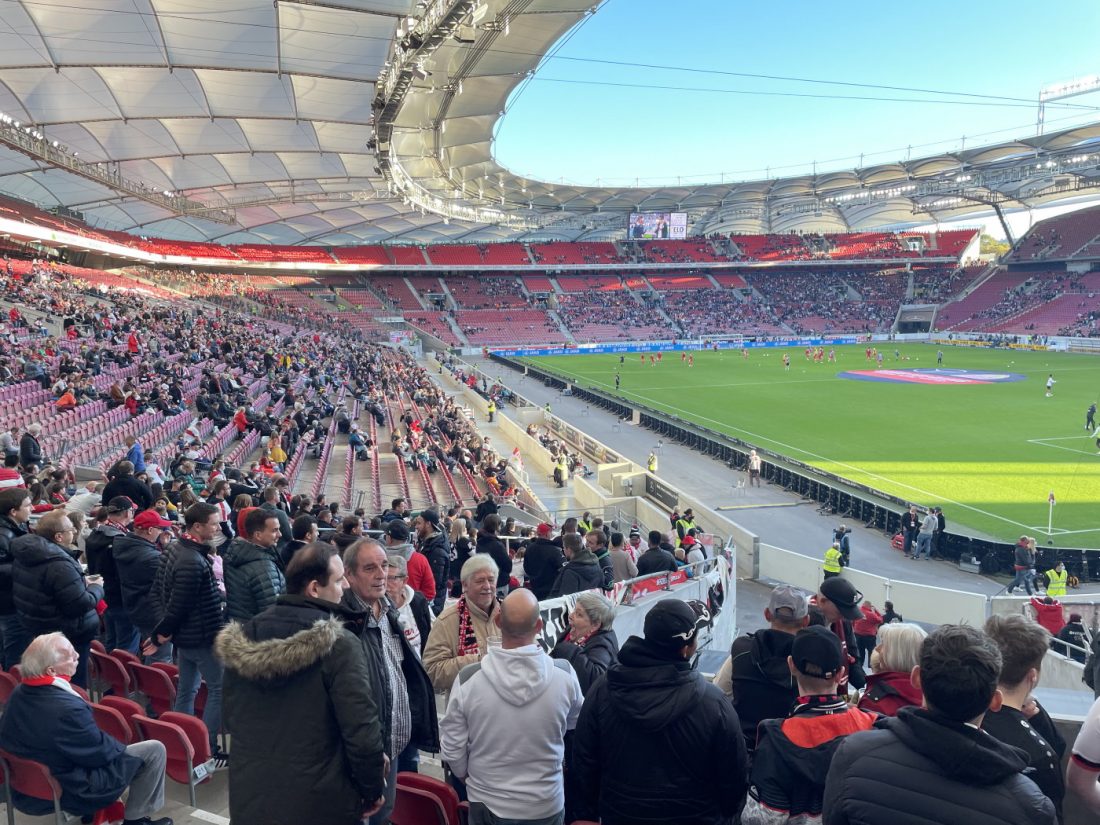
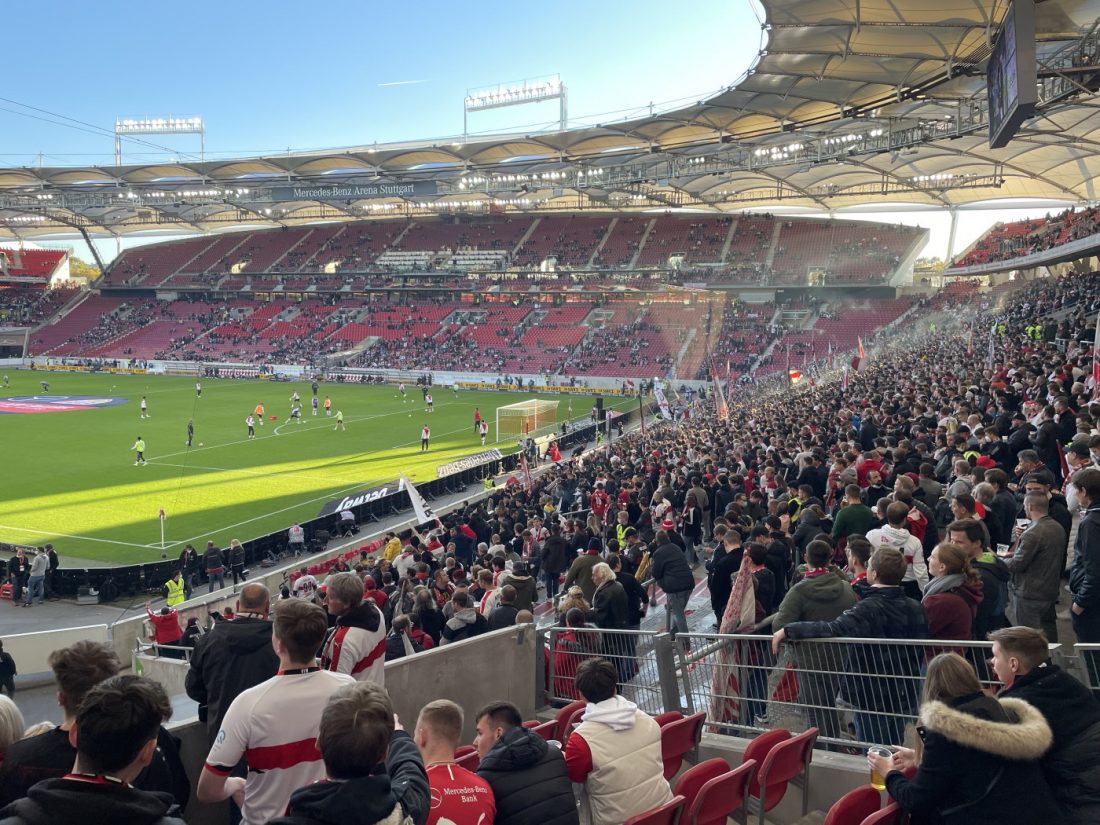
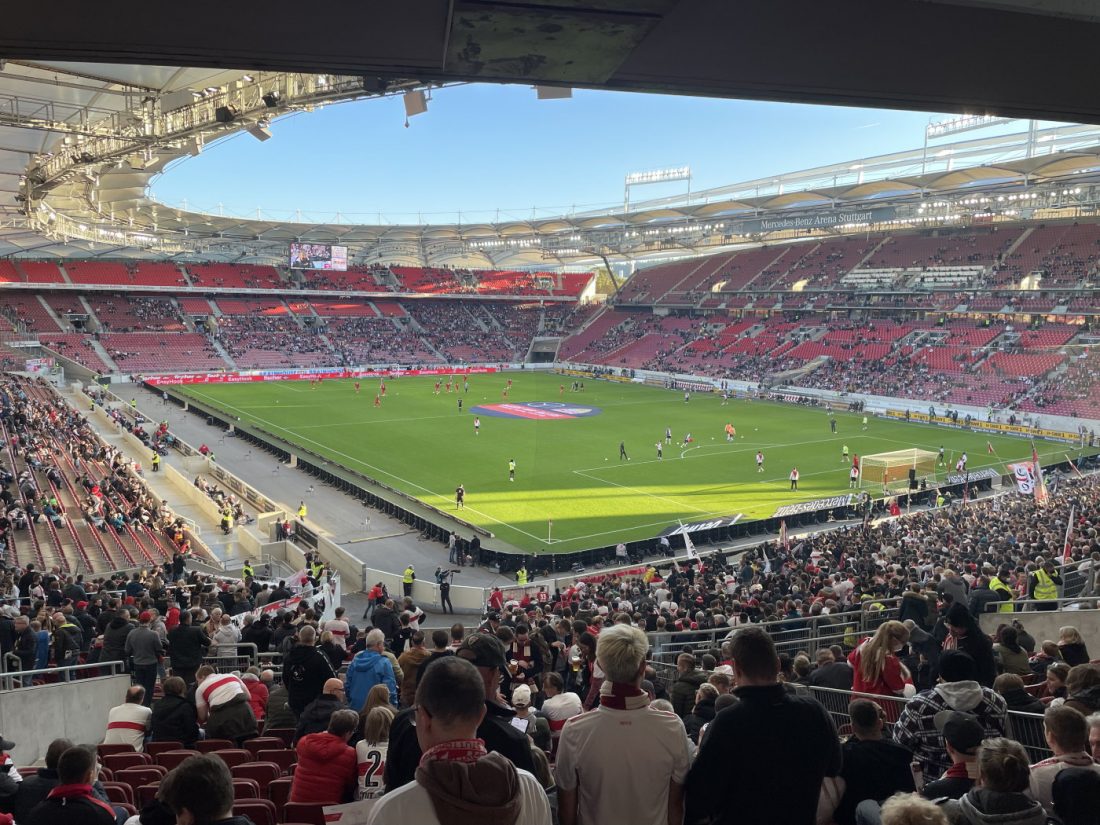
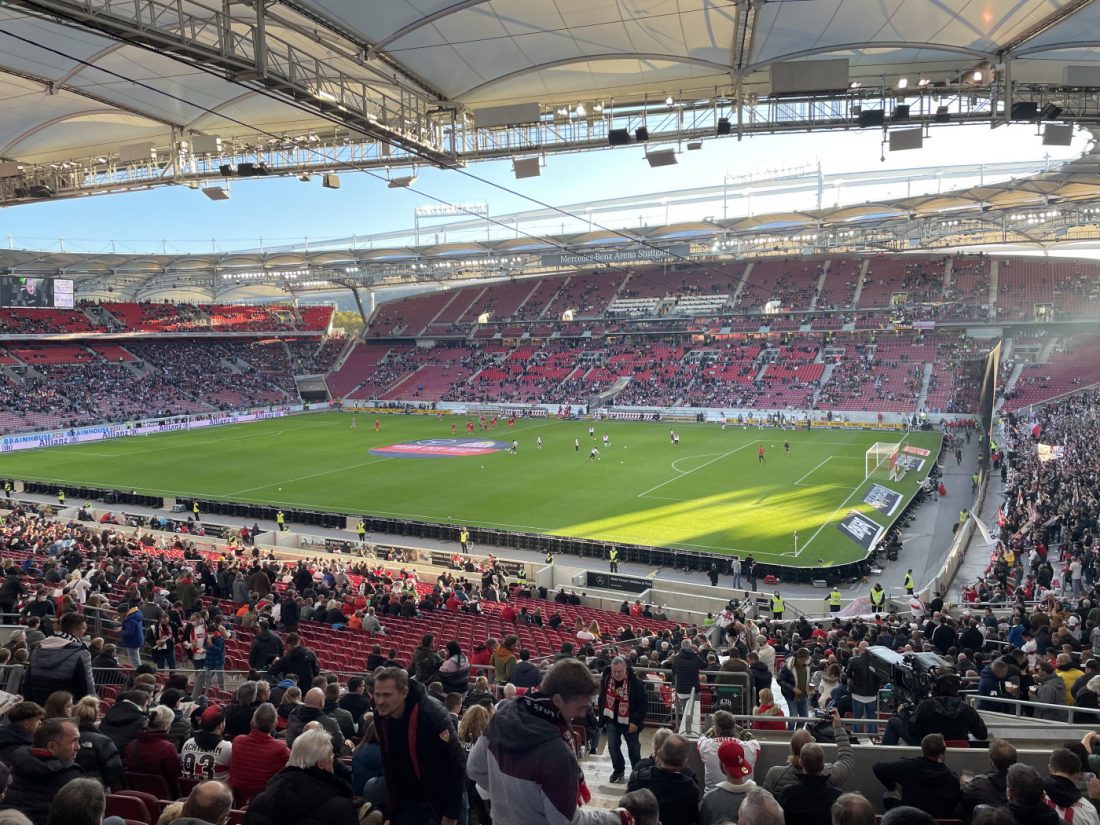
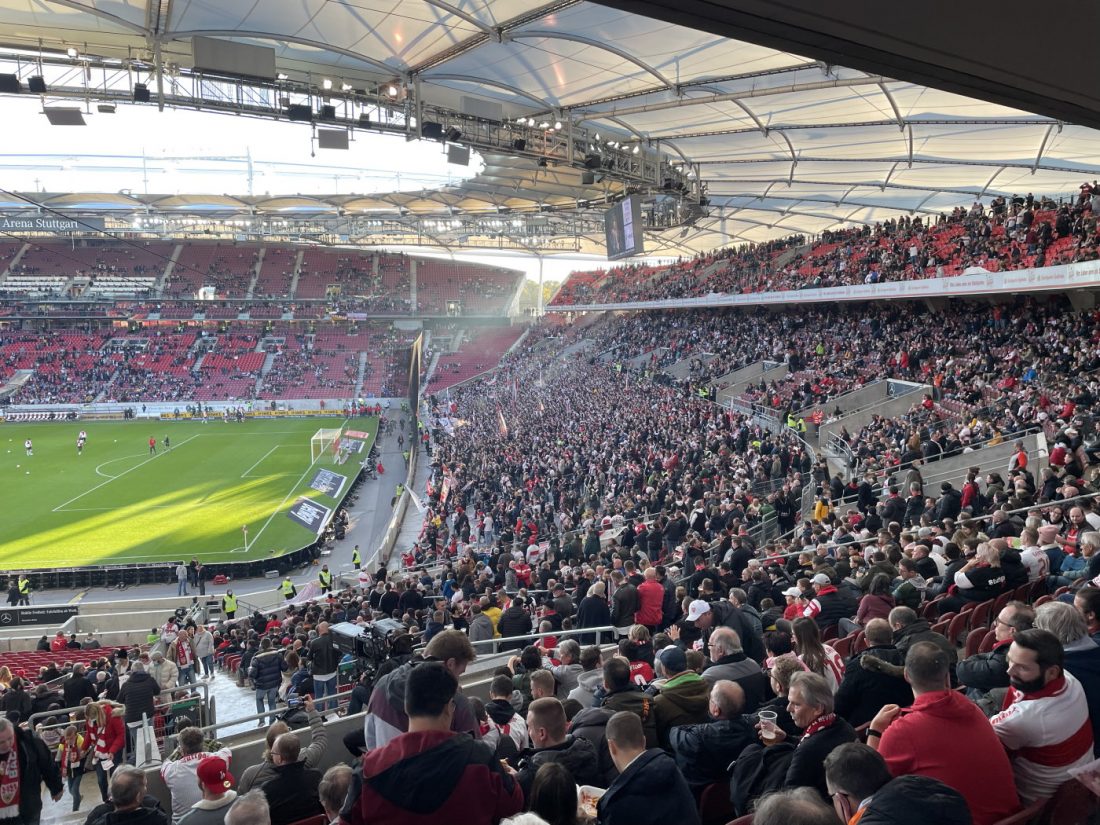
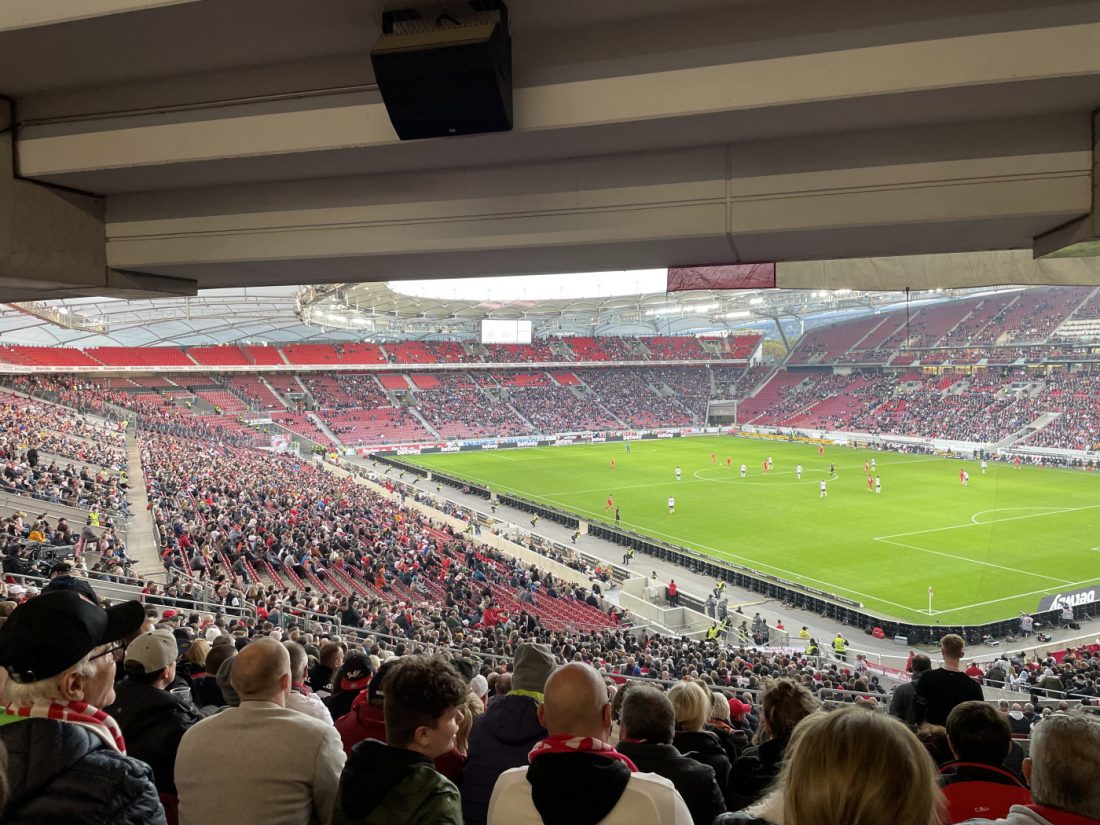
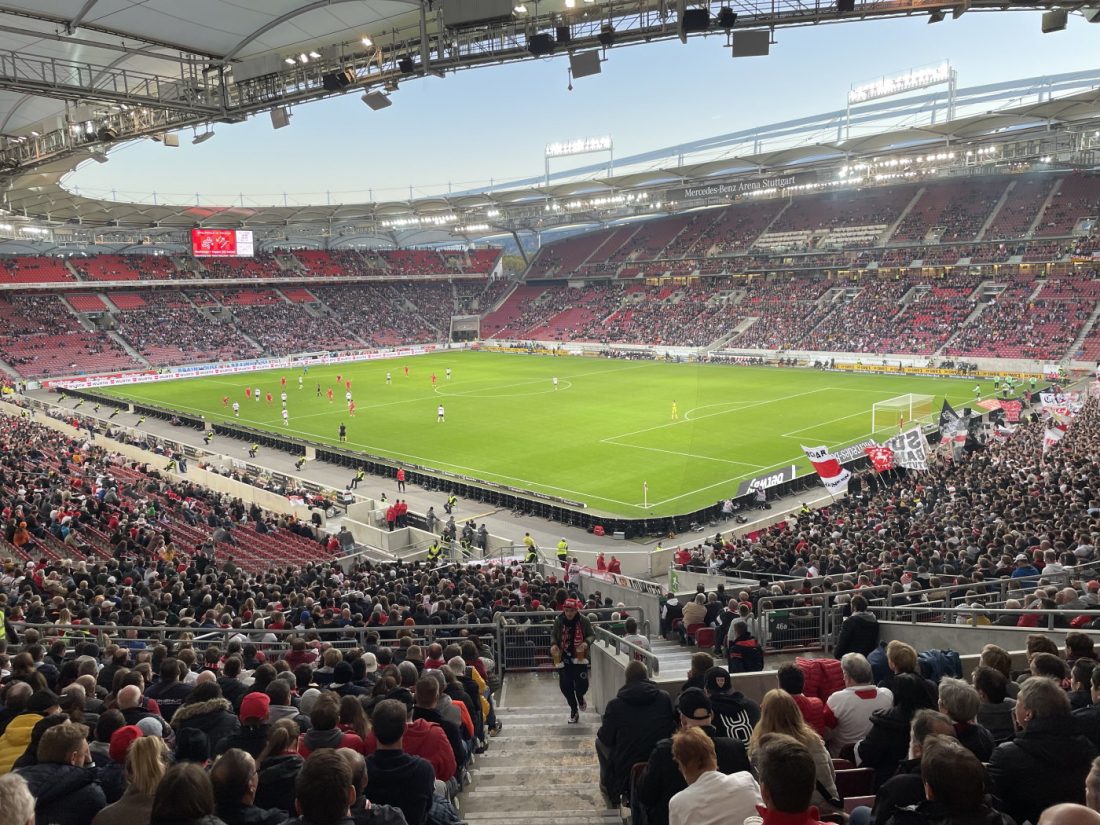
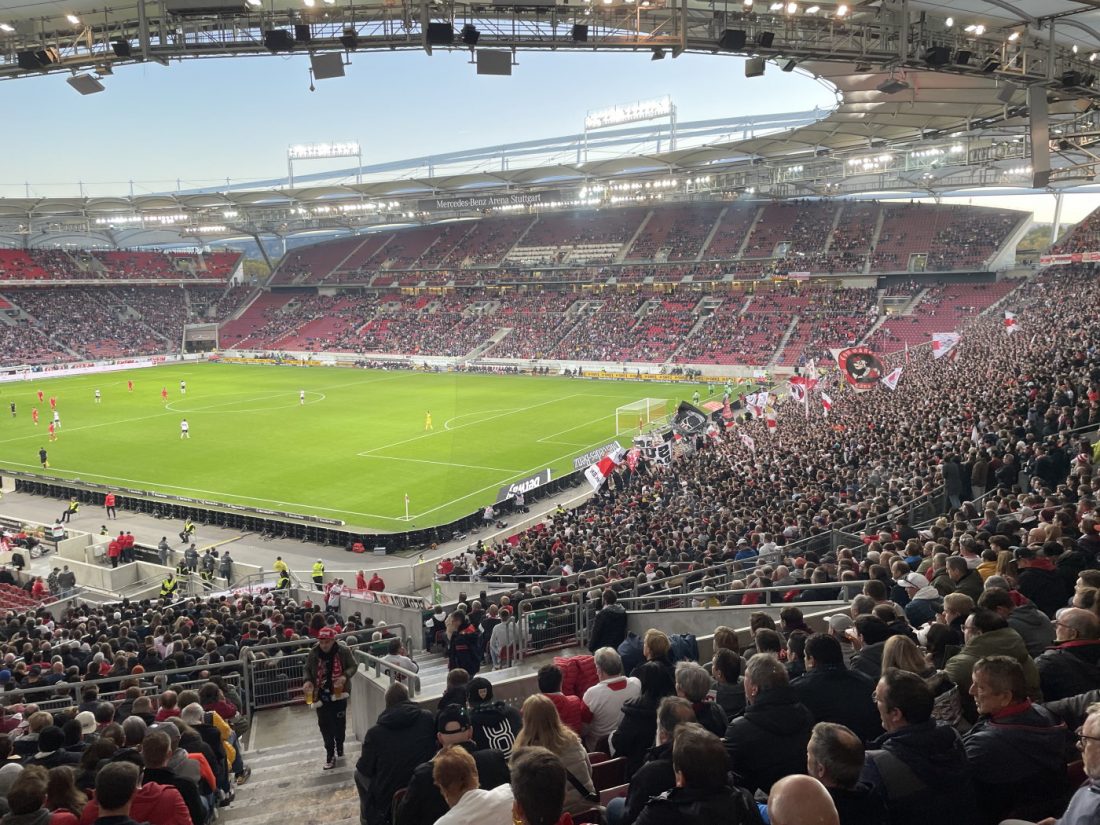
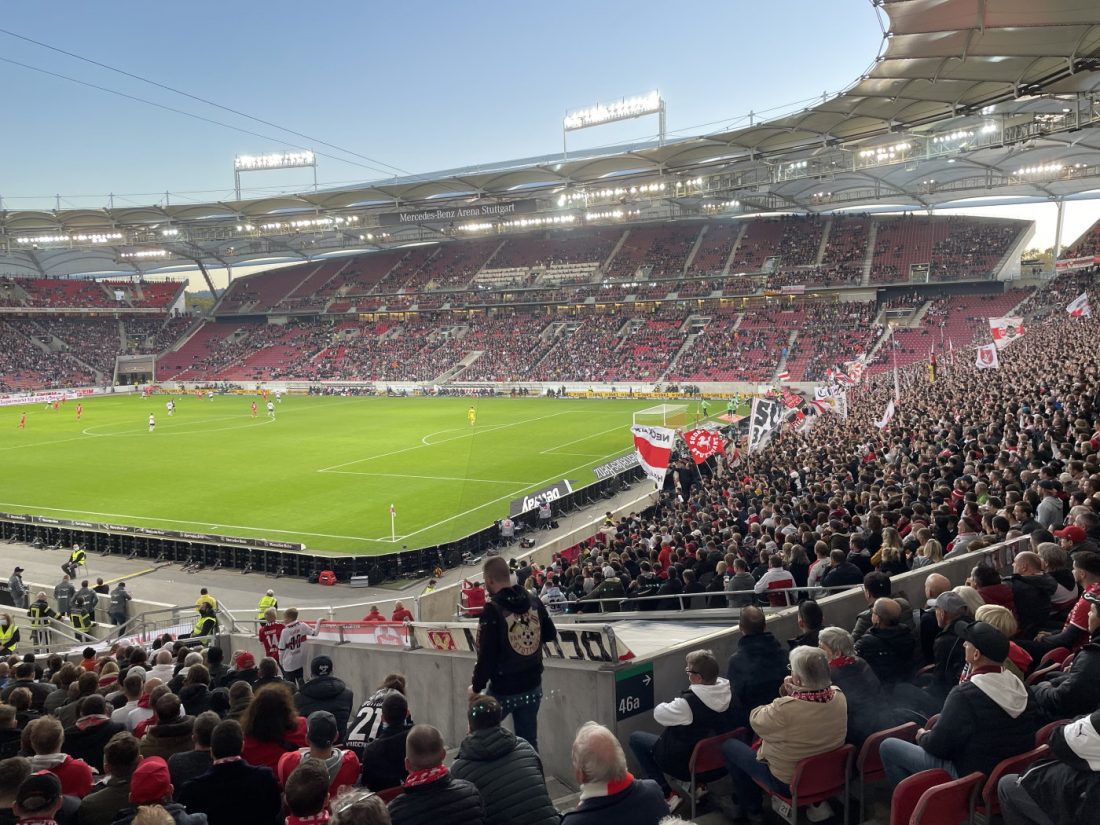
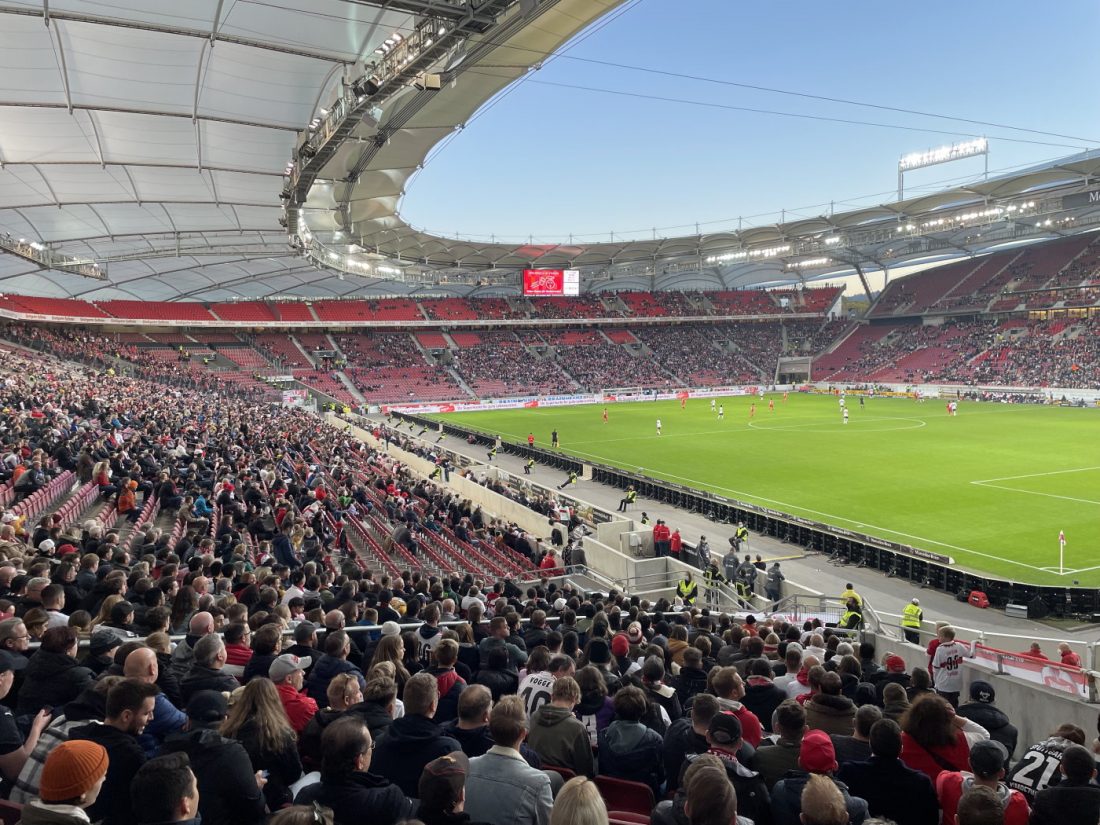
1 comment
Wonderful Stadium.
Did the stadium tour last year as we were in Stuttgart for Cannstatter Wasen.
Stadium tour was very in depth and the guide was fantastic (so was her English, but in general the Germans are very hospitable with that.)
Some real gems to pick up on as well. Why is there a window in the gents toilet? and what feature of this stadium did the Allianz Arena adopt and now pay VfB for?
Well worth a visit.